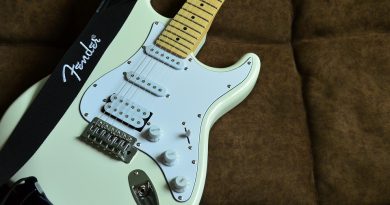Mastering Guitar Techniques: A Beginner’s Guide to Shredding
Mastering Guitar Techniques: A Beginner’s Guide to Shredding
If you’re a beginner guitarist looking to take your playing to the next level, mastering guitar techniques is crucial. From shredding solos to intricate chord progressions, honing your skills will not only make you a more versatile player but also help you stand out from the rest. In this beginner’s guide, we will explore some essential techniques that every aspiring shredder should know.
Understanding Guitar Techniques
Before diving into specific techniques, it’s important to understand the basics of guitar playing. A solid foundation in rhythm, timing, and hand coordination is essential for mastering more advanced techniques. Make sure you spend time practicing scales, chords, and basic finger exercises to develop your dexterity and strength.
Once you feel comfortable with the fundamentals, you can start incorporating more advanced techniques into your playing. Whether you’re into metal, rock, or blues, mastering these techniques will help you take your guitar skills to the next level.
1. Alternate Picking
Alternate picking is a technique used to play fast and precise sequences of notes. By using a combination of downstrokes and upstrokes, you can create a fluid and seamless sound. To practice alternate picking, start by playing a simple scale or riff and alternate between picking directions. Focus on staying relaxed and maintaining a consistent rhythm as you build speed.
2. Sweep Picking
Sweep picking is a technique commonly used in metal and rock music to play arpeggios and fast licks. To sweep pick, use a sweeping motion with your pick across multiple strings while muting the strings in between. Start with slow and simple arpeggio shapes and gradually increase the speed as you become more comfortable with the technique.
3. Hammer-ons and Pull-offs
Hammer-ons and pull-offs are essential techniques for creating smooth and fluid legato lines. To perform a hammer-on, play a note and then hammer your finger onto a higher fret without picking again. Pull-offs, on the other hand, involve pulling your finger off a string to create a new note without picking. Practice hammer-ons and pull-offs with simple scales and licks to build speed and accuracy.
4. Tapping
Tapping is a technique made famous by guitarists like Eddie Van Halen and Steve Vai. It involves using your picking hand to tap notes on the fretboard, creating fast and intricate patterns. To practice tapping, start with simple tapping exercises and gradually incorporate it into your solos and riffs. Focus on maintaining a clear and precise sound as you develop your tapping skills.
5. Vibrato
Vibrato is a technique used to add emotion and expression to your playing. By bending a note up and down rhythmically, you can create a subtle or intense vibrato effect. Practice vibrato by bending notes with your fingers and wrist, focusing on control and consistency. Experiment with different speeds and depths of vibrato to find your distinctive style.
6. Bending
Bending is a technique used to alter the pitch of a note by pushing or pulling the string. Whether you’re bending a single note or a full chord, mastering bending will add depth and character to your playing. Practice bending notes with your fingers and wrist, focusing on accuracy and control. Experiment with different bending techniques and use them creatively in your solos and improvisations.
7. String Skipping
String skipping is a technique used to create dynamic and unpredictable melodies. By skipping strings while playing scales or arpeggios, you can create unique and exciting patterns. Practice string skipping by playing scales or arpeggios across multiple strings, skipping one or more strings in between. Focus on maintaining a smooth and consistent sound as you develop your string skipping skills.
Mastering Guitar Techniques takes time and dedication. As a beginner, focus on building a strong foundation in basic techniques and gradually incorporate more advanced ones into your playing. Practice regularly, set goals, and seek guidance from experienced players to accelerate your progress. With patience and perseverance, you can become a proficient shredder and stand out as a guitarist expert expert in no time.






